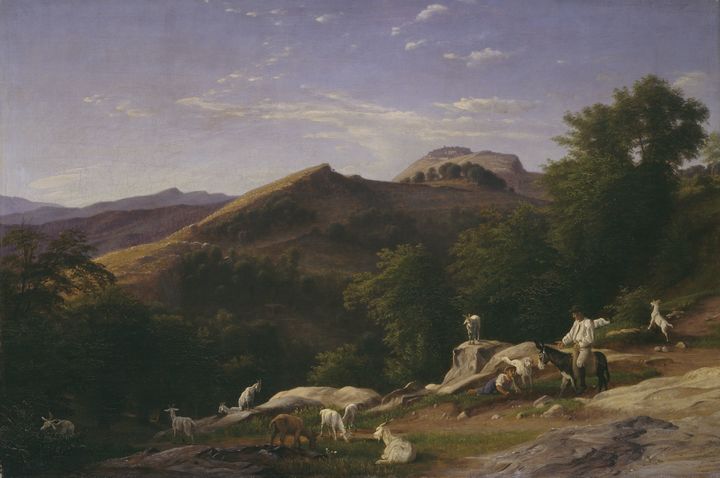Skovgaard
Introduction

The Skovgaard Museum was founded in 1937 to honour Joakim Skovgaard (1856–1933) for his monumental decoration of Viborg Cathedral. The cornerstone of the museum collection is a donation from Joakim Skovgaard of the family library and art collection. The museum inherited the Skovgaard family’s letter archive from Joakim Skovgaard’s son, Peter Skovgaard, who before his death organized the letters according to topic, sender and recipient. The archive contains about 5,000 letters divided into 172 folders. It is of interest today especially due to the Skovgaard family’s many close relations to significant individuals in Danish history and the family’s role in the Danish art world.
The oldest part of the archive dates from the time of Joakim’s father, P. C. Skovgaard. In addition to exchanges with fellow artists, including Wilhelm Marstrand, Constantin Hansen and J. Th. Lundbye, it also contains letters to and from N. L. Høyen, N. F. S. Grundtvig, D. G. Monrad and Orla Lehmann, among others. These letters provide unique insights into the Golden Age of Danish art and society at large. The next generation is made up of P. C. Skovgaard’s children, Joakim, Niels and Susette Skovgaard. This part of the archive contains letters exchanged with artist friends and colleagues, including Kristian Zahrtmann, Theodor Philipsen, Viggo Pedersen, Christian Skredsvig, Erik Werenskiold and Svend Grundtvig. It offers insights into the development of the Royal Danish Academy of Fine Arts, where both P. C. Skovgaard and Joakim Skovgaard were professors and where Joakim Skovgaard later became the director. Joakim Skovgaard, Niels Skovgaard and Susette Holten, née Skovgaard, were also actively involved in founding Den frie Udstilling (the Free Exhibition) and in social development and current affairs. Susette fought for equal rights for women at the Royal Danish Academy of Fine Arts and was one of the leading figures of Kvindernes Udstilling (the Women’s Exhibition). Joakim and Niels carried out many decorative projects around the country. The archive offers good insight into the working process of these projects, from initial idea to realization. In addition, Joakim often served as a jury member and thus had direct influence on the assignment of high-profile decorative projects.
Until now, the archive has remained fairly unknown and has mostly been accessed by researchers. It is, however, a historical goldmine that offers insight into everyday life, the art world and the political situation over a one-hundred-year period. With this release of online transcriptions and scans of the original material, the Skovgaard Museum and the New Carlsberg Foundation wish to promote knowledge of the archive and make it accessible to students, researchers and other interested individuals. The Skovgaard Archive has a rich collection of historical first-hand sources which we hope will benefit a much wider circle in the future.
Work in progress
About ten years ago, a small group of museum volunteers began to transcribe the letters. Thus, as we begin this project, we have about 1,500 letters that have already been transcribed. The Skovgaard Archive covers the period from the early 19th century until about the 1960s. As the project will take many months or even years to complete, we have decided to publish the architect continually. Hence, some of the letters and other materials will temporarily appear without any accompanying information besides the names of sender and recipient; however, the scan of the original material will always be available. Over time, all the letters will appear with annotations and references. If you have any comments or corrections, please contact the Skovgaard Museum at post@skovgaardmuseet.dk.